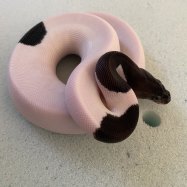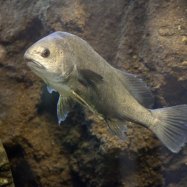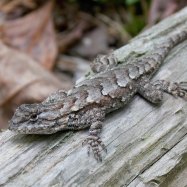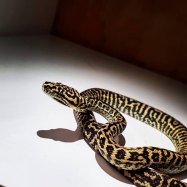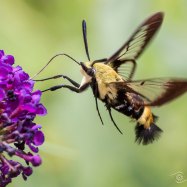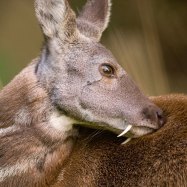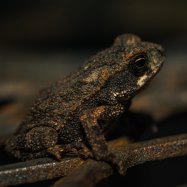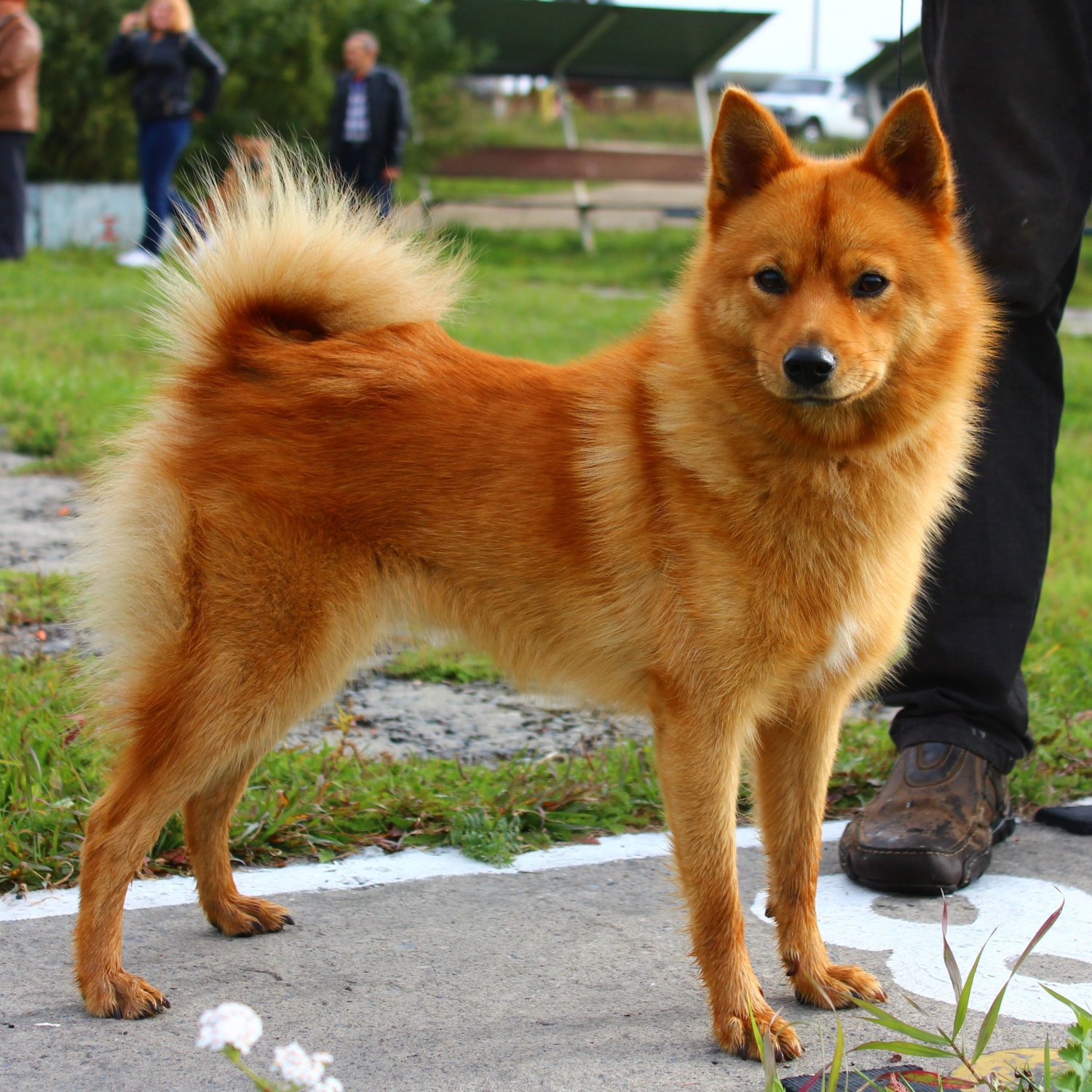
Finnish Spitz
12.5-15.5 inches (32-39 cm)
The Finnish Spitz, known for its fiery red coat, is a medium-sized and compact canine breed. Found in Northern Europe, it belongs to the Canidae family and typically measures between 12.5-15.5 inches (32-39 cm) in length. With its friendly and alert nature, the Finnish Spitz makes a great companion for those who love active and intelligent dogs. #FinnishSpitz #CanineCompanions #NorthernEurope #DogLovers
Animal Details Summary:
Common Name: Finnish Spitz
Kingdom: Animalia
Habitat: Forests
The Unique Finnish Spitz: A True Icon of Finland's Forests
As you trek through the lush forests of Finland, you may come across a strikingly beautiful dog with a vibrant coat of ruby-red fur and a watchful gaze. This is the Finnish Spitz, a beloved national icon and a breed that has captured the hearts of dog lovers all over the world.The Finnish Spitz, scientifically known as Canis lupus familiaris, is a member of the Canidae family and is native to Finland. It is also known as the Finkie or the Suomenpystykorva in its home country Finnish Spitz. This medium-sized, compact dog with its unique appearance and charming personality has made its way into the hearts of many, and it's not hard to see why.
A Proud Heritage
The history of the Finnish Spitz can be traced back to the ancient hunting dogs of the Finnish tribes. These dogs were highly valued for their hunting skills, especially in tracking and pointing out small game such as birds, squirrels, and even predators like bears and elks. The Finnish Spitz evolved from these hunting dogs through careful breeding and selection by Finnish hunters and farmers, who wanted a dog that could not only excel in hunting but also serve as a loyal and companionable family pet.Nature's Perfect Predator
Carnivorous by nature, the Finnish Spitz has inherited its hunting instincts from its ancestors. With its sharp senses, exceptional speed, and agility, this breed is a skilled hunter. Its long and pointed muzzle, dark almond-shaped eyes, and erect triangular ears make for perfect adaptations for hunting in the dense Finnish forests.Despite being a hunting dog, the Finnish Spitz is not a big game hunter but rather a specialist in tracking small game. Its distinctive bark, known as the “yodel,” is another useful adaptation for hunting Fly. This bark is a high-pitched, sharp sound that changes pitch according to the distance of the prey and helps the dog communicate with its handler and fellow hunting dogs.
A Thriving Habitat
As its name suggests, the Finnish Spitz is native to Finland and is deeply intertwined with the country's culture and history. It is believed that the breed was brought to Finland by the Finno-Ugric tribes over 5,000 years ago, making it one of the oldest breeds in the world. While its original purpose was hunting, the Finnish Spitz quickly became a beloved pet among the Finnish people, and it was officially recognized as the national breed of Finland in 1979.The breed's natural habitat is the dense forests of Finland, which make up more than 75% of the country's land area. These forests are home to a wide variety of flora and fauna, including the animals that the Finnish Spitz is adept at hunting. The breed's compact size and dexterity make it well-suited for navigating through the dense underbrush and chasing its prey, making it a formidable hunter in its natural habitat.
A Royal Coat
One of the most distinguishing features of the Finnish Spitz is its striking coat of red fur. The breed's coat comes in various shades of red, ranging from light honey to deep copper, and sometimes with hints of white on the toes and chest. Its double coat consists of a soft undercoat and a harsher outer coat that provides insulation and protection from the harsh weather of the Finnish forests.The Finnish Spitz has a unique coat pattern that resembles that of a fox or a wolf. This is believed to be an adaptation to help the breed camouflage and blend in with its surroundings while hunting. The double coat also sheds seasonally, with a heavy shedding period in the spring and fall, and requires regular grooming to keep it healthy and free from tangles and mats.
A Well-Proportioned Body
Another notable feature of the Finnish Spitz is its medium-sized, well-proportioned body. The breed's average height ranges from 12.5-15.5 inches (32-39 cm), and they weigh between 23-33 pounds (10-15 kg). This size makes them easy to handle and carry, which was a crucial factor for hunters in the past. The breed has a well-developed chest, muscular hindquarters, and a slightly curved back, giving it a sturdy and athletic appearance.The Finnish Spitz's body is perfectly suited for its role as a hunter, with its well-rounded chest providing space for its heart and lungs, enabling it to have good endurance and stamina. Its hind legs give it the agility and speed it needs for chasing its prey through the forest. When not hunting, the Finnish Spitz is a highly active breed that requires regular exercise and mental stimulation to stay healthy and happy.
A True Reflection of Finland
The Finnish Spitz is deeply entrenched in the history and culture of Finland and is a perfect representation of the country. Its hunting skills, loyalty, and strong bond with its owners reflect the Finnish people's resilient and hardworking nature. Its furry coat, a symbol of the country's vibrant landscapes and natural resources. The breed's unique barking, a language of its own, is a reflection of the Finnish language, which is deeply rooted in the country's folklore.The Finnish Spitz's popularity has spread well beyond its home country, with many countries recognizing the breed and forming official breed clubs. The Finnish Spitz Club of America, founded in 1959, has been instrumental in preserving and promoting the breed in North America. Today, the Finnish Spitz is a beloved pet and has also found success in the show ring, competing in various dog shows and agility competitions.
Final Thoughts
The Finnish Spitz is truly one of a kind, with its striking appearance, natural hunting abilities, and deep roots in Finnish culture and history. Its loyal and loving nature has earned it the nickname "the barking bird dog" and made it a popular companion for many families. Its unique characteristics and role as an icon of Finland's forests have made it a breed worth celebrating and preserving. Whether you're looking for a skilled hunting dog or a devoted pet, the Finnish Spitz is a breed that will surely capture your heart.

Finnish Spitz
Animal Details Finnish Spitz - Scientific Name: Canis lupus familiaris
- Category: Animals F
- Scientific Name: Canis lupus familiaris
- Common Name: Finnish Spitz
- Kingdom: Animalia
- Phylum: Chordata
- Class: Mammalia
- Order: Carnivora
- Family: Canidae
- Habitat: Forests
- Feeding Method: Carnivorous
- Geographical Distribution: Finland
- Country of Origin: Finland
- Location: Northern Europe
- Animal Coloration: Various shades of red
- Body Shape: Medium-sized, compact
- Length: 12.5-15.5 inches (32-39 cm)
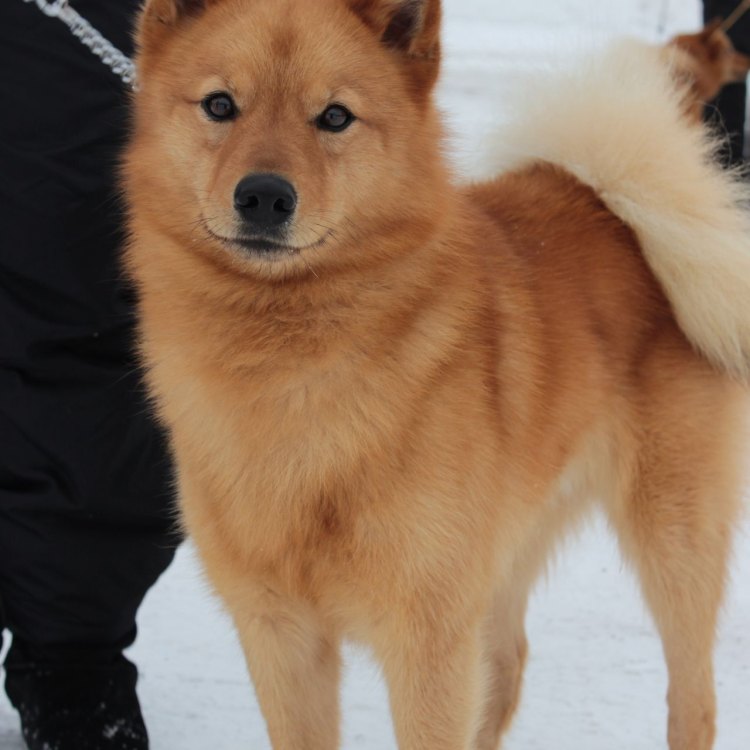
Finnish Spitz
- Adult Size: Medium
- Average Lifespan: 12-15 years
- Reproduction: Sexual
- Reproductive Behavior: Monoestrous
- Sound or Call: Distinctive high-pitched bark
- Migration Pattern: Non-migratory
- Social Groups: Solitary
- Behavior: Energetic, alert, intelligent
- Threats: Hunting, habitat loss
- Conservation Status: Vulnerable
- Impact on Ecosystem: Helps control small mammal populations
- Human Use: Companion dog
- Distinctive Features: Fox-like face, bushy tail
- Interesting Facts: Finnish national dog, used for hunting
- Predator: No natural predators

Canis lupus familiaris
The Finnish Spitz: A Unique and Endangered Dog Breed
Dogs have been a beloved and integral part of human society for thousands of years. Throughout this time, they have adapted to various environments and developed different breeds, each with their own distinctive features and characteristics. One such breed is the Finnish Spitz, a medium-sized dog that is both unique and endangered.Originating from the northern regions of Finland, the Finnish Spitz is believed to have a long genetic history with Scandinavian spitz-type dogs PeaceOfAnimals.Com. They were originally bred for hunting game birds and small mammals, and over time, they became known as the "Barking Bird Dog" for their distinctive high-pitched bark that they use to alert their human companions to potential prey.
Today, the Finnish Spitz is recognized as the national dog of Finland and remains a popular breed for its companionship and hunting skills. However, despite its strong cultural significance, the Finnish Spitz is facing numerous threats to its survival, making it a vulnerable breed that requires attention and conservation efforts.
In this article, we will explore the unique features of the Finnish Spitz, its behavior and natural habitat, its significance to the ecosystem, and the challenges it faces as an endangered breed.
The Unique Features of the Finnish Spitz
The Finnish Spitz is a medium-sized dog that typically weighs between 20-30 pounds and stands 15-20 inches tall at the shoulder. Their bodies are athletic and well-proportioned, with well-developed muscles that allow them to be quick and agile. As a spitz-type dog, they have a thick double coat, consisting of a soft, dense undercoat and a longer, harsher topcoat. This coat serves as protection against the harsh elements of the Finnish climate.One of the most distinctive features of the Finnish Spitz is its fox-like face, with a slender muzzle, small triangular ears, and almond-shaped eyes False Coral Snake. This unique appearance gives the Finnish Spitz an alert, intelligent, and mischievous expression, making them endearing to their owners.
Another distinctive feature of the Finnish Spitz is its bushy tail, which is usually curled over the dog's back. This tail can vary in length, ranging from short to medium in length, and is an essential part of the breed's overall appearance.
Behavior and Natural Habitat
The Finnish Spitz is an energetic and active breed known for its playful and playful personality. They are natural hunters with acute senses, making them excellent at tracking and chasing prey. In their natural habitat, which is predominantly the boreal forests of Finland, they use their sharp eyesight and keen sense of smell to hunt game birds, such as grouse and capercaillie, and small mammals, such as squirrels and raccoons.The Finnish Spitz is also known for its distinctive bark, which is used as a hunting tool to signal their success in finding potential prey. This bark is a high-pitched, rapid yodeling sound that can echo through the forest, making it easier for their hunters to locate them.
In terms of reproduction, the Finnish Spitz is a sexually reproducing mammal with a monoestrus reproductive behavior. This means that they only go into heat once a year, typically during the spring, and can only breed during this time. In the wild, they form solitary social groups and do not have a strong pack instinct like other dog breeds.
The Finnish Spitz's Significance to the Ecosystem
As a hunting breed, the Finnish Spitz plays a crucial role in controlling the population of small mammals in their natural habitat. By preying on animals such as squirrels, rabbits, and rodents, they help maintain balance in the ecosystem and prevent any potential overpopulation that could lead to ecological issues.In addition, the Finnish Spitz's keen sense of smell and sharp eyesight make them excellent game trackers, which is essential for conservation efforts. They are often used by researchers to track and locate elusive and endangered species, aiding in their protection and management.
A Companion Dog in Need of Conservation
Despite its importance to the ecosystem, the Finnish Spitz is facing numerous threats to its survival, making it an endangered breed. One of the main threats is hunting, as their hunting skills and distinct bark have made them popular targets for trophy hunting.Habitat loss is also a significant issue for the Finnish Spitz, as the expansion of human development and urbanization encroaches on their natural habitats. This not only reduces the available space for the breed to thrive but also disrupts their hunting patterns and puts them at risk of being hit by vehicles.
As a result of these threats, the Finnish Spitz is currently classified as a vulnerable breed by the International Union for Conservation of Nature (IUCN). This designation means that the population of Finnish Spitz is decreasing, and urgent conservation efforts are needed to prevent their extinction.
The Importance of Conservation Efforts
The Finnish Spitz is a unique and culturally significant breed, both to the people of Finland and to the survival of the ecosystem. Therefore, it is crucial to take necessary measures to protect and preserve this breed for future generations.Conservation efforts for the Finnish Spitz primarily focus on protecting their natural habitat, raising awareness about the breed's importance, and implementing strict regulations against hunting and illegal breeding. Additionally, breeding programs have been established to maintain a healthy and genetically diverse population of Finnish Spitz.
As a result of these conservation efforts, the Finnish Spitz population has seen a slow but steady increase in recent years. However, their status as a vulnerable breed remains, and it is essential to continue advocating for their protection and conservation.
The Finnish Spitz as a Companion Dog
Despite being a vulnerable breed, the Finnish Spitz has also gained popularity as a companion dog in recent years. Due to their energetic and playful nature, Finnish Spitz makes excellent companions for active individuals or families. They are incredibly loyal and affectionate to their human companions and form strong bonds with them.Additionally, their intelligent and alert nature makes them easy to train and well-suited for various activities, such as agility courses and obedience training. However, due to their hunting instincts, it is essential to provide proper training and socialization to prevent any potential behavior issues.
Conclusion
In conclusion, the Finnish Spitz is a unique and endangered dog breed that holds great significance to the people of Finland and the ecosystem. With its distinctive features, hunting skills, and playful personality, the Finnish Spitz has captured the hearts of many individuals as a companion dog. However, with hunting and habitat loss threatening its survival, it is crucial to raise awareness and take necessary conservation efforts to protect this breed. By doing so, we can ensure that this culturally significant and ecologically important breed continues to thrive for generations to come.
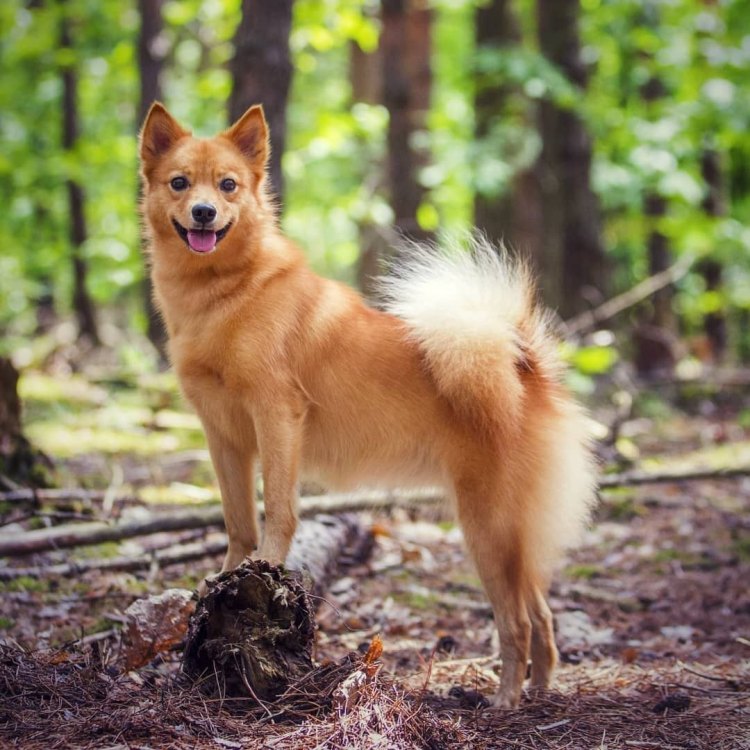
The Unique Finnish Spitz: A True Icon of Finland's Forests
Disclaimer: The content provided is for informational purposes only. We cannot guarantee the accuracy of the information on this page 100%. All information provided here may change without prior notice.


